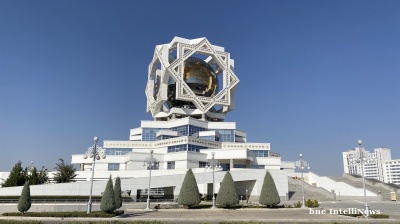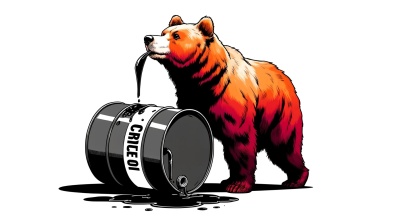As crucial foreign aid to Ukraine continues to be held up, Russian forces are pressing home their advantage across many sectors of the 1,200km frontline.
After a four-month offensive, Russian troops captured the fortress town of Avdiivka on February 19. The settlement had formed a key bulwark of Ukraine’s defence line in the Donbas for nearly a decade, having been the scene of heavy fighting in the initial conflict in 2014-15.
Russian forces launched a concerted offensive on the town in October, losing thousands of soldiers and hundreds of armored vehicles in a push that nevertheless slowly won ground from the Ukrainian defenders, who are suffering from a crippling lack of ammunition as critical US military aid continues to be held up in the US Congress.
On February 17, Ukraine’s commander in chief announced that Ukrainian forces would be withdrawn from the town, handing Russia its largest battlefield victory since the capture of Bakhmut last May.
In Kupiansk, a once-occupied town in Ukraine’s northeastern Kharkiv oblast, there are fears that the area could be Moscow’s next target.
Smoke rose above the city’s industrial area on a recent visit by bne IntelliNews, the result of near-constant Russian artillery and rocket strikes. Kupiansk itself lies only eight kilometers from the front line, well within range of nearly everything in Russia’s arsenal. The city itself remains surprisingly well populated considering the circumstances, with seemingly every second building a blasted ruin.
Next battleground
Its defenders are holding, at least for now.
“It is difficult, because our forces here are not equal [to Russia’s] at all,” says Nadya, a press officer with Ukraine’s 14th Mechanised Brigade, deployed in the area. “We have a lack of heavy equipment of all types, from tanks to artillery and ammunition. If we receive [more of] those, our ability to hold will be much greater,” she says.
Something of an afterthought for the past year, the Kupiansk sector may be the next major battleground as Russia seeks to exploit Ukrainian ammunition and manpower shortages, particularly in the run-up to Vladimir Putin’s ceremonial re-election in mid-March.
The Centre for Defence Strategies, a Ukrainian think tank, assessed recently that Russia has concentrated a huge force aimed at retaking the area, constituting some 40,000 troops, 500 tanks, 650 BMPs (infantry fighting vehicles) and other systems. Russian assaults in late January seized the villages of Krokhmalne and possibly also Tabaivka, 20km southeast of Kupiansk, marking the first changes to the frontline in the area in months.
While local Ukrainian military personnel could not confirm the size of the Russian force opposing them, they did indicate that Russian attacks had intensified in recent months.
“I can’t say for certain the exact number of troops or vehicles that [Russia] has here,” Nadya says. “But what is certain is that the Kupiansk direction is a priority for them. It seems that they are trying very hard here, looking for weak spots [in our defences], day by day. Russia has not reoccupied any major cities in Ukraine [after losing control of them], but it looks like this is what they are trying to do here,” she said.
Kupiansk itself has already passed through occupation. Russian troops entered the city on February 27, 2022, after its then-mayor defected and cooperated with Moscow. It served as a key rail junction for Russian logistics in eastern Ukraine for the next six months, until it was liberated as part of Ukraine’s sweeping Kharkiv counteroffensive on September 9.
But Moscow has sought to reverse that. As Ukraine’s summer 2023 offensive wound down, Russian troops stepped up their attacks, leading Ukrainian officials to begin evacuating the town once again in August.
Other indicators of Russia’s intention to seize the city soon include a reappearance of assaults by massed tanks – previously long unseen in this sector of the front.
“For the past six months, the intensity of the fighting here has gotten worse and worse,” Nadya says. “The Russians appear to have more troops and ammunition [in this sector] than they did a year ago. It’s not only infantry either, there was an episode recently where [the Russians] tried to advance with a column of tanks in one area near here. They were all destroyed, but it was an indicator that more assaults [with tanks] are probably coming soon,” she adds.
Ukrainian officials are bracing for the worst. Regular bus services from Kupiansk to Kharkiv, the regional centre, carry far more passengers out of the city than into it. The head of Kharkiv oblast’s military administration announced on February 16 that more than 1,000 people had been evacuated from the area in the past month, with the exodus still ‘gaining momentum’.
Drawing closer
Andrii Besedin, the mayor of Kupiansk, is at the head of these efforts to keep the city running regularly – or what passes for regular, in these circumstances. Most services still function, although the recent departure of Nova Poshta, Ukraine’s mail service (and usually one of the very first amenities to resume operations in liberated settlements), is ominous.
Besedin says the situation is still stable, but adds that Russian forces are pushing hard – and drawing closer every week.
“It’s probably true that [the Russians] have as many forces over here as they say [in the media],” Besedin says. “Right now, they are trying to take over the east side of the [Oskil] river, pushing up towards Kupiansk. They have some local successes, in Krokhmalne and Tabaivka, but yesterday our forces pushed them back a bit from Tabaivka,” he says.
The Russian campaign in the area, consistent with their tactics across Ukraine for the past two years, has involved regular strikes on civilian and critical infrastructure, seeking to induce civilians to vacate and to deprive Ukrainian soldiers of cover.
“[The Russians] have been striking civilian infrastructure, energy facilities, water and heating infrastructure constantly,” Besedin says. “There was another strike on an apartment building just last night, Fortunately no one was killed, but two people were wounded.” Just hours later, new airstrikes would wound five more civilians in Kupiansk.
Recent struggles on the front have spilled into the political sphere in Ukraine. The failure of last year’s summer offensive to achieve its goals saw the increasingly faltering relationship between President Volodymyr Zelenskiy and top general Valery Zaluzhny spill into the open, eventually resulting in the latter’s dismissal on February 8. His replacement, Oleksandr Syrsky, was soon forced to issue the dispiriting withdrawal from Avdiivka – an inauspicious, if unavoidable, start to his tenure.
For now, the most pressing concern that Ukraine remains capable of addressing itself is the manpower issue. While the holdup of over $60 billion in American military assistance is a problem Kyiv can little affect, the growing dearth of infantry is meanwhile a growing concern.
Many of Ukraine’s soldiers have fought on the front for nearly two straight years – one soldier bne IntelliNews spoke with in Kupiansk said he had received just a single one-week break from the fighting in the past six months. The difficult and unpopular political decision to mobilise hundreds of thousands of new soldiers – Zaluzhny had been seeking half a million fresh recruits before his firing – is one that Zelenskiy has been loath to take.
Above it all, questions about the reliability of foreign aid, especially from the US, hang heavy. Without it, there is a very real risk that for Ukraine, 2024 will consist of a series of Avdiivkas – with Kupiansk possibly coming next.
“Without American support, it will be very difficult,” Besedin, Kupiansk’s mayor, admits. “Europe has given us a lot, they have been our backbone, but they simply cannot provide the quantity of weapons and ammunition we need. We are defending right now, and we are holding as best we can, but at some point, we will need to liberate our land.”
Features

COMMENT: For Asia, dealing with Europe isn’t about achieving success; it’s about concealing failure
To be taken seriously in Asia, Europe must rediscover the courage to deliver, not merely declare. Asia has moved on to execution. Europe is still editing its initial policy draft.

Washington has a new focus on a Caspian energy play
For most of the last three decades since winning independence, Central Asia has been a bit of a backwater. Not any more. The Trump administration is becoming more focused on Turkmenistan's vast gas reserves and can smell money and power there.

BOTAŞ and Turkey’s hub ambition: from “30-year dream” to cross-border reality
For Ankara, the symbolism is as important as the molecules: Turkey’s energy map is shifting from end-market to hub.





